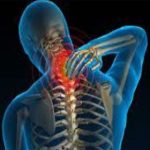The future prospects of cell
and gene therapy

Musculoskeletal Disorder
Role of Cell and Gene Therapy in Musculoskeletal Disorder
- Osteoarthritis
- Gene Therapy: This therapy aims to deliver therapeutic genes that can reduce inflammation and promote cartilage repair. For example, genes encoding anti-inflammatory cytokines like IL-1Ra (Interleukin-1 Receptor Antagonist) or growth factors such as TGF-β (Transforming Growth Factor-beta) are introduced into the joint to slow disease progression and enhance cartilage regeneration.
- Cell Therapy: Mesenchymal stem cells (MSCs) can differentiate into chondrocytes (cartilage cells) and produce extracellular matrix, promoting the repair of damaged cartilage. Clinical trials have shown that intra-articular injection of MSCs can reduce pain and improve joint function in osteoarthritis patients.
- Muscular Dystrophy
- Gene Therapy: Gene therapy for muscular dystrophies, such as Duchenne Muscular Dystrophy (DMD), involves delivering a functional copy of the dystrophin gene using viral vectors to muscle cells, restoring dystrophin production and improving muscle strength and function. Clinical trials have demonstrated promising results, with treated patients showing improvements in muscle function and reduced disease progression.
- Cell Therapy: Myoblast transplantation involves transplanting muscle progenitor cells into dystrophic muscles to replace the damaged muscle fibers. Additionally, satellite cells, which are muscle stem cells, are being explored for their regenerative potential, potentially restoring muscle function in patients with muscular dystrophy.
- Bone Repair and Regeneration
- Gene Therapy: Gene therapy can be used to enhance the expression of bone morphogenetic proteins (BMPs), which are critical for bone formation and healing. Delivering BMP genes to fracture sites using viral vectors can accelerate bone healing and improve the quality of the regenerated bone.
- Cell Therapy: Osteoprogenitor cells, derived from MSCs, are being investigated for their ability to promote bone regeneration. These cells can differentiate into osteoblasts (bone-forming cells) and are used in combination with scaffolds to treat non-union fractures and bone defects. Clinical studies have shown that cell-based therapies can significantly enhance bone healing and reduce the need for additional surgeries.
- Tendon and Ligament Injuries
- Gene Therapy: Gene therapy approaches for tendon and ligament injuries focus on delivering genes that encode growth factors, such as VEGF and PDGF (platelet-derived growth factor), to enhance healing and reduce scar tissue formation. These genes can be delivered locally to the injury site using viral vectors, promoting tissue repair and functional recovery.
- Cell Therapy: MSCs and tenocytes (tendon cells) are being explored for their potential to regenerate damaged tendons and ligaments. These cells can be injected into the injured area to promote collagen production and tissue remodeling, leading to improved mechanical properties and faster recovery times. Early clinical trials have shown promising results in the treatment of rotator cuff tears and Achilles tendon injuries.
- Intervertebral Disc Degeneration
- Gene Therapy: Gene therapy for intervertebral disc degeneration aims to introduce genes that promote the synthesis of extracellular matrix components, such as aggrecan and collagen, to restore disc height and function. This approach can potentially reverse the degenerative process and alleviate chronic back pain associated with disc degeneration.
- Cell Therapy: MSCs and nucleus pulposus cells (cells native to the intervertebral disc) are being investigated for their regenerative potential. These cells can be injected into the degenerated disc to promote tissue repair and restore disc function. Clinical studies have reported improvements in pain and function in patients receiving cell-based therapies for disc degeneration.
